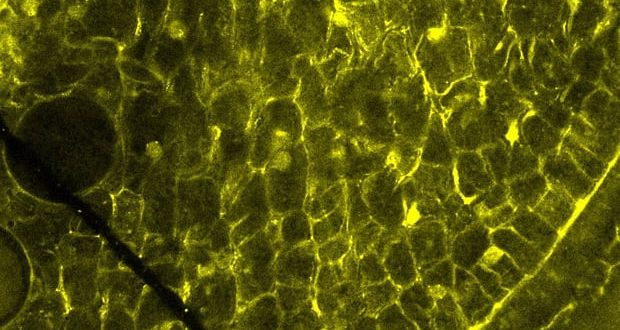The discover of a unique rooting anatomy from 407m years ago supports theory roots evolved at least twice, and step by step
Most of us do not spend much time contemplating plant roots. Not only do they suffer from the wider issue of plant blindness, but they are also the bit of the plant that is not visible. In terms of getting people excited about plant science, it’s a tough gig. This is a shame, because plant roots are critical to all of our lives: no roots means no food. Roots provide anchorage, and allow plants to gain water and nutrients from the soil. They also form a key symbiotic relationship with mycorrhizal fungi, which provide minerals from the soil in return for a steady supply of carbs from the plant.
In the modern world, we can easily divide plants into the ones that have roots and the ones that don’t. The flowering plants (angiosperms) and the other vascular plant groups (conifers and other seed plants, ferns, horsetails and clubmosses) all have a recognisable root, defined by having a meristem of rapidly-dividing, undifferentiated cells, and by having a root cap, which protects the apex of the growing root and which is where the plant perceives gravity.
The other, non-vascular, land plants – mosses and liverworts – lack the plumbing to move water and food around their bodies, and also lack true roots. These plants do have rhizoids, which are simple, hair-like structures, analogous to the root hairs on the surface of a flowering plant root. Rhizoids are used for water transport, and some may be involved in nutrient transport, but they aren’t fully-functioning roots.
We know that rhizoids have been around for a very long time. The Rhynie Chert is an amazing window into the past. It preserves a 407m-year-old hydrothermal wetlands ecosystem in astonishing, cellular detail. Most of the early land plants found in the Rhynie Chert have rhizoids, but until now nothing anything like a true root organ had been recognised.
A new study by Alexander Hetherington and Liam Dolan, published in the Journal Nature, describes root meristems from the Rhynie Chert, belonging to a plant called Asteroxylon mackiei. Asteroxylon is a lycopsid, the group of land plants which includes small modern clubmosses such as Selaginella, and the extinct giant Lepidodendron forest trees of the Coal Measures. What Asteroxylon does not have is a root cap. The five apices of root-like structures that the researchers found (from examining 641 thin section slides from museum and university collections across the UK) are covered by a continuous layer of epidermis over the meristem and no tapering root cap, seen in all modern plants with roots, is present.
Given the exceptional preservation of everything else, the authors ruled out a preservational reason for its absence. They also showed that the cellular organisation within three of the apices indicated that they actively growing when they were preserved, so the root caps were not lost because growth had stopped. The orientations of cell walls, indicating cell division patterns within the meristem, also ruled out the formation of a root cap. Root hairs, present in modern true roots, are also completely absent in Asteroxylon.
All of this evidence adds up to a startling conclusion: since modern clubmosses do have true roots with root caps, true roots have evolved (at least) twice: once, in a step-wise fashion, in the lycopsid branch, with Asteroxylon (with a meristem, but without root cap or root hairs) representing an intermediate stage, and independently in all the rest of the vascular land plants. The similarity in root anatomy between clubmosses and all other vascular plants is a case of convergent evolution.
One of the very first blog posts I wrote for Lost Worlds Revisited back in 2016 was also about fossil root meristems, and at the time I remember feeling really lucky to have found a platform to share palaeobotanical discoveries with a far wider audience than they would ever normally get. Sadly, with the imminent closure of the Guardian’s Science Blog Network, this is my last blog post. It’s been a wonderful experience, working with the finest team of palaeo bloggers (thanks Dave, Elsa, Hanneke and Mark!), and I will miss revisiting all of our lost worlds terribly.
The Guardian
 Lebanese Ministry of Information
Lebanese Ministry of Information



